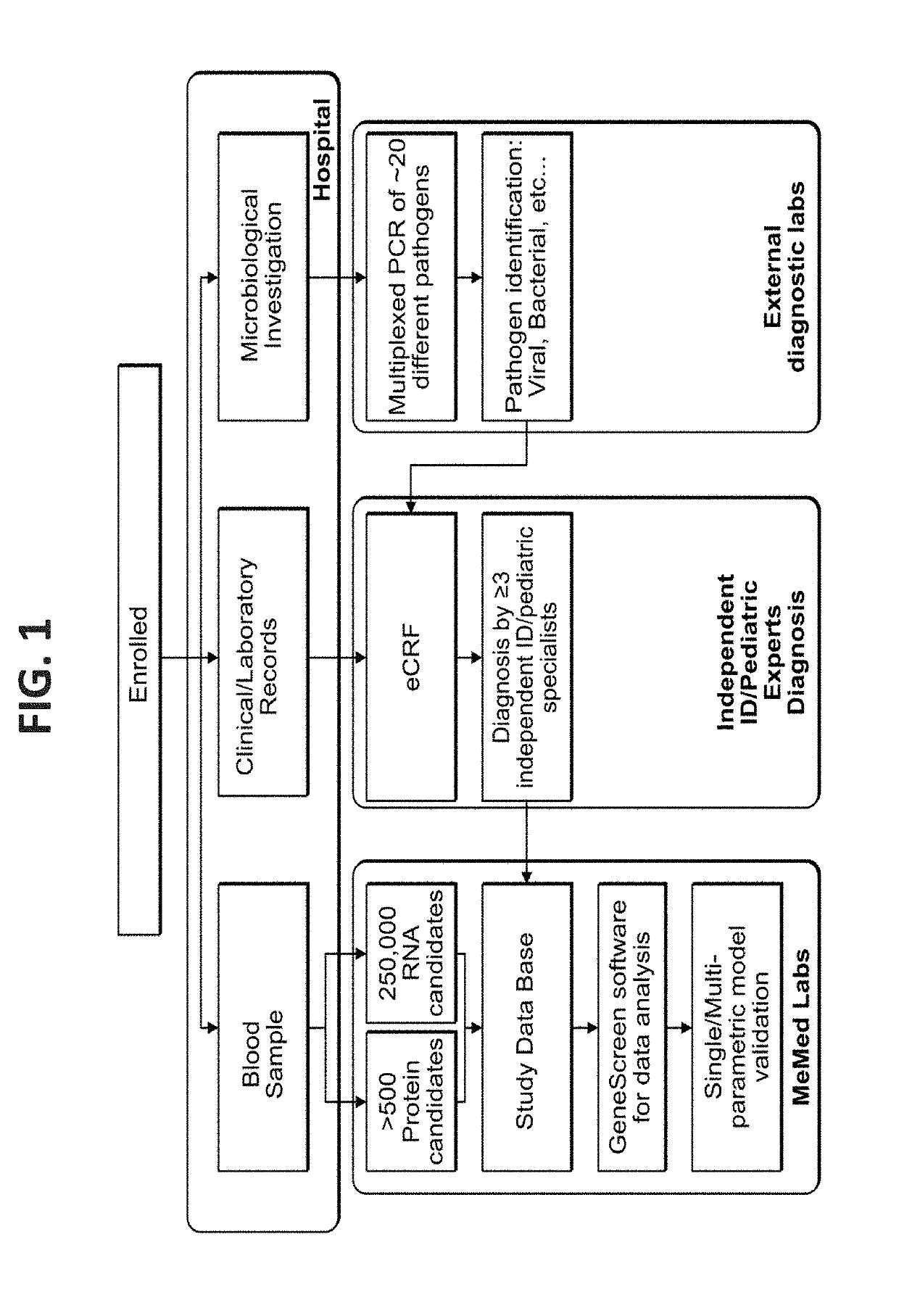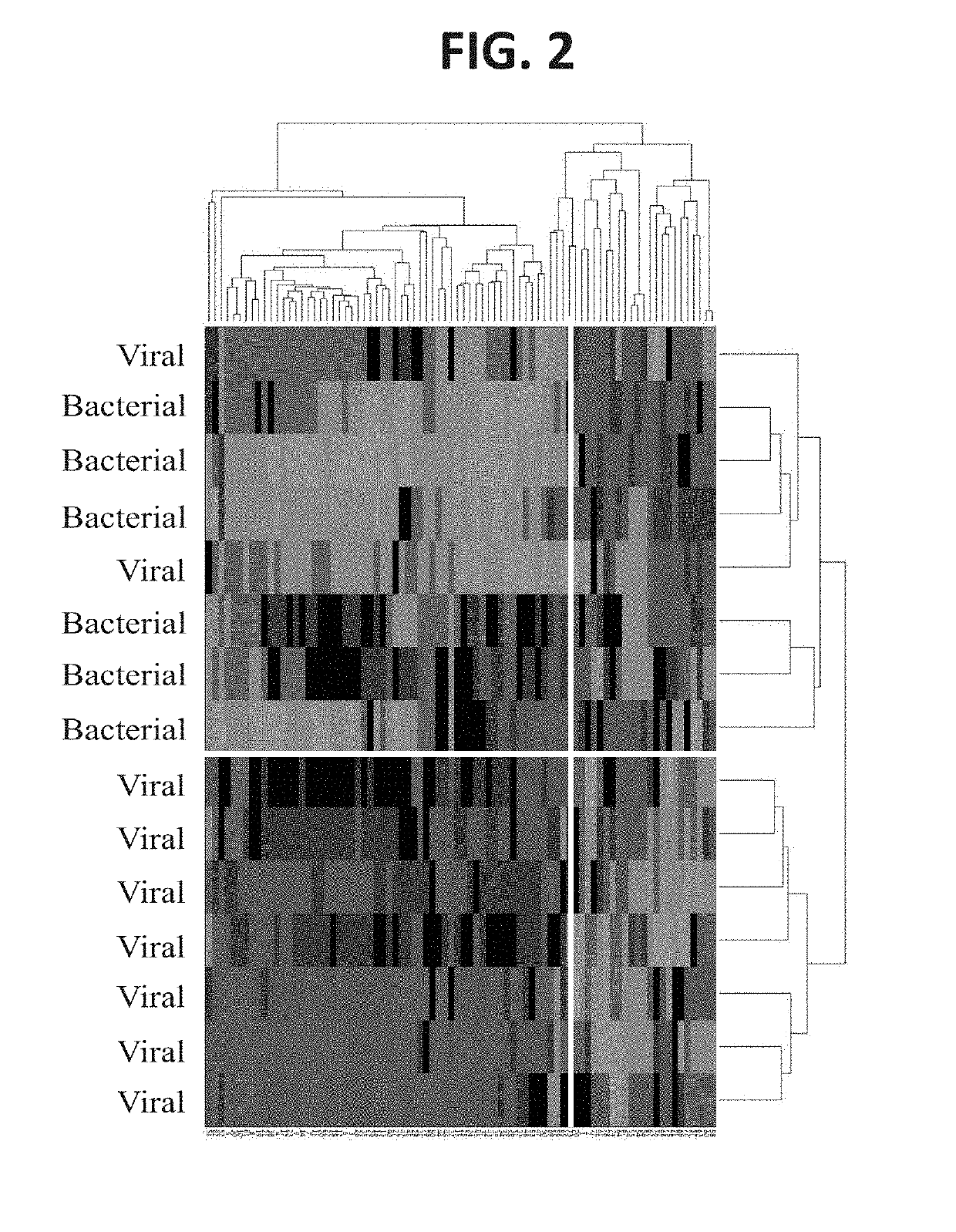RNA determinants for distinguishing between bacterial and viral infections
a technology of determinants and bacterial infections, applied in the field of identification of signatures and determinants associated with bacterial and viral infections, can solve the problems of reducing the quality of healthcare, ineffective antibiotics, and cost of antibiotics
- Summary
- Abstract
- Description
- Claims
- Application Information
AI Technical Summary
Benefits of technology
Problems solved by technology
Method used
Image
Examples
example 1
Gene Expression Profiles Discriminate Between Patients with Bacterial and Viral Infections
Materials and Methods
[0380]Patient Recruitment
[0381]Patients were prospectively recruited as part of the ‘Curiosity’ clinical study (NCT01917461; (Oved et al. 2015)). Informed consent was obtained from each participant or legal guardian, as applicable. Inclusion criteria for the infectious disease cohort included: clinical suspicion of an acute infectious disease, peak fever >37.5° C. since symptoms onset, and duration of symptoms ≤12 days. Inclusion criteria for the control group included: clinical impression of a non-infectious disease (e.g. trauma, stroke and myocardial infarction), or healthy subjects. Exclusion criteria included: evidence of any episode of acute infectious disease in the two weeks preceding enrollment; diagnosed congenital immune deficiency; current treatment with immunosuppressive or immunomodulatory therapy; active malignancy, proven or suspected human immunodeficiency v...
example 2
Whole Transcriptome Expression Analysis to Identify RNA-Based Determinants and Signature for Discriminating Between Patients with Bacterial and Viral Infections
[0403]Materials and Methods
[0404]Patient Recruitment
[0405]Patients were prospectively recruited as part of the ‘Curiosity’ and the ‘Tailored-Treatment’ clinical studies (NCT01917461 and NCT02025699). Informed consent was obtained from each participant or legal guardian, as applicable. Inclusion criteria for the infectious disease cohort included: clinical suspicion of an acute infectious disease, peak fever >37.5° C. since symptoms onset, and duration of symptoms ≤12 days. Inclusion criteria for the control group included: clinical impression of a non-infectious disease (e.g. trauma, stroke and myocardial infarction), or healthy subjects. Exclusion criteria included: evidence of any episode of acute infectious disease in the two weeks preceding enrollment; diagnosed congenital immune deficiency; current treatment with immunos...
PUM
 Login to View More
Login to View More Abstract
Description
Claims
Application Information
 Login to View More
Login to View More - R&D
- Intellectual Property
- Life Sciences
- Materials
- Tech Scout
- Unparalleled Data Quality
- Higher Quality Content
- 60% Fewer Hallucinations
Browse by: Latest US Patents, China's latest patents, Technical Efficacy Thesaurus, Application Domain, Technology Topic, Popular Technical Reports.
© 2025 PatSnap. All rights reserved.Legal|Privacy policy|Modern Slavery Act Transparency Statement|Sitemap|About US| Contact US: help@patsnap.com



